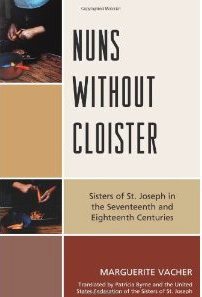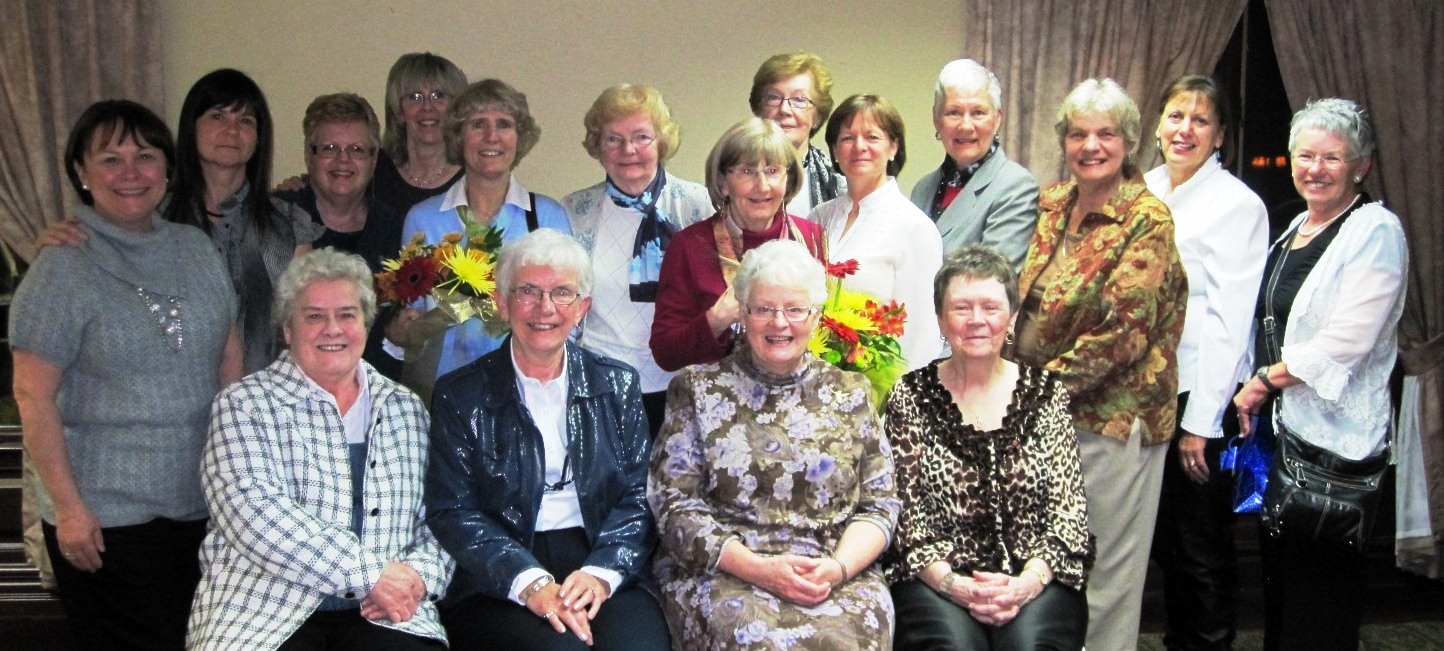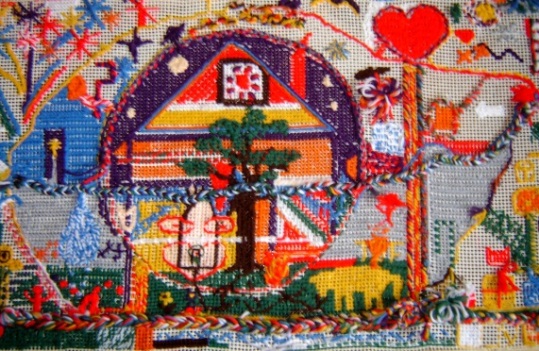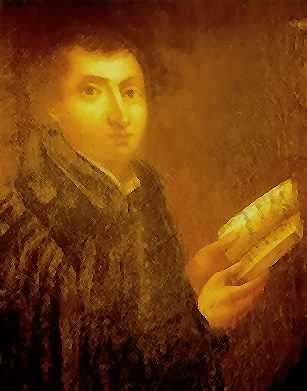History and Vision

Yes, let us be about the Gospel mission of circling the world with LOVE... from our own homes ... and now with our online Communities of the Little Design.
The Eucharistic Letter remained largely unknown even to the Sisters of St. Joseph until the days after Vatican II when all religious were challenged to return to the Gospel and the ‘original inspiration’ of their founders for their renewal. Almost immediately after Vatican II, translators from the French and American Sisters of St. Joseph met with Fr. Nepper, S.J. and worked through all the written documents bequeathed to us by Father Jean-Pierre Medaille, S.J.
1. Among the sisters in the 17th and 18th Century
The status of The Eucharistic Letter among the sisters in the 17th and 18th century is uncertain. Apparently, the actual Eucharistic Letter remained hidden in this form from the sisters and was not circulated, or very little, among the communities. Certainly, ‘fragments’ of the mystical spirituality described in the Eucharistic Letter are found throughout the Constitutions, the Reglements and the Maxims so the sisters were getting the same spirituality and inspiration.
According to Marguerite Vacher, “When Father Medaille wrote the Letter in 1660, most of the existing houses were very small, with as little outward appearance as Jesus in the Eucharist. This he saw as gain: “How happy our Institute will be if it maintains this spirit of littleness, humility and self-emptying.” (p. 106)
After 10 years of witnessing the first development and fruits of these early communities, Fr. Medaille seems, upon reflection, to get a glimpse into the future. In The Eucharistic Letter, he reiterates and expands the mystical aspects of the littleness and hiddenness and self-emptying love. There seems to be no doubt that he is directing our attention toward what was newest, that is - the little houses scattered in the country, rather than toward the more prominent and already more recognized city houses.
Even from these early beginnings and throughout the 4+ centuries, there seems to have manifested these two parallel paths for this Medaillan spirituality to grow and evolve:
- one group was attracted to a more mystical way of life, remaining little, hidden, small groupings, not needing to be legally recognized. (‘Little Design’ is a term used profusely in The Eucharistic Letter.)
- one group was seeking a more socially recognized and canonically approved religious life that had larger houses, superiors, public vows and ministerial apostolates. (Constitutions, Congregation of St. Joseph)
Throughout the years, the ‘gift’ has been a spirit of unity and charity in all the diversity of forms. This comes from our deep intimate sharing in the love of Christ that has gathered us together as one. The ‘Beams of Love’ embrace everyone! Everything belongs! Certainly, this absence of The Eucharistic Letter in our hands for 210 years makes us take pause!
2. Rediscovered at Riotord, France in 1870
The archives of the community of Sisters of St. Joseph at Riotord contain a small notebook, dated 1870 on the first page, in which Father Freycenon, then ecclesiastical superior of the community, introduces the Eucharistic Letter to the sisters. He discovered this document among the community’s old papers, and thinking its content worthy of reflection, he gave the community some explanation and commentary on it.
The notebook contains notations of long passages from the Letter as well as the very appreciative interpretations Father Freycenon gave the sisters. Could Father Freycenon have had the original in his hand? In the same notebook, the sister superior of the community recorded that he took the document away and did not return it. She is not alone in voicing her regret.” (Vacher, p. 373)
3. Rediscovered again at Lyon, France in 1878
It comes out of the silence again and the sisters hear it as a summary of their true vocation. However, its omissions distort its pristine essence.
“In 1878 Abbe Rivaux had The Eucharistic Letter published in his Life of Mother Sacred Heart. However, the author, without alerting his readers, omitted everything that alluded to the secrecy characteristic of the first foundation of The Little Design and thus established firmly the idea that this Eucharistic Letter was a primary document intended for the present congregation of Saint Joseph.”
And now a new shift…
4. Marius Nepper, S.J. and research team (1969-1973)
The early research of Marius Nepper linked The Eucharistic Letter with a 1646 date and what was called a ‘first foundation’. “About 1646, Father Jean-Pierre Medaille founded an active religious group by the rather singular name, Little Design. Two documents provide us with rather abundant details regarding the structures of this new congregation: The Eucharistic Letter which reveals its mystique and the Reglements which state its organization and activities.” (Marius Nepper, SJ, 1973)
(Thanks to Marguerite Vacher’s latest research, Nuns Without Cloister, we now accept 1660 as the date for The Eucharistic Letter and it is not connected with the Reglements (1646).
The birthing of the Congregation of St. Joseph was in a process for a few years prior to 1650 when the first six women took their public vows before Bishop de Maupas in Le Puy. So, there was no ‘first foundation’, only the movement of Spirit working within the women and the Bishop and Fr. Medaille that climaxed on the official foundation date.
By 1975 the translators had given us all of the original MEDAILLE documents in English.
Father Medaille’s writings include:
1646 The Rules for the Daughters of Saint Joseph
1657 The Maxims of Perfection: Part One (written for all devout souls)
1660 The Eucharistic Letter (written for all devout souls)
1672 The Maxims of Perfection: Part One and Part Two
(written for all devout souls)
1693 The Primitive Constitutions
(first printed version for the Sisters of St. Joseph)
Maxims of the Little Institute
(100 Maxims for the Sisters of St. Joseph)
Another shift in our awareness…
5. Adrien Demoustier, S.J. (1968 and 2000)
Fr. Demoustier has spent considerable time pondering and sharing his commentary on The Eucharistic Letter. He first wrote an article in 1968 and wrote another insightful article, some 32 years later in 2000. I quote from these sources to add to our reflections here.
In a Commentary on the Letter of Father Médaille on The Little Design (1968 talk) he says:
“We do not know if the Letter reveals a plan oriented toward a future undetermined, or if on the contrary, it traces out a path to little groups already in existence. Certain indications suggest that it is addressed to little communities which are seeking to come into being and to survive while struggling to remain unknown.
Father Médaille encourages them in a path which he knows to be good. But, he must also know that it cannot lead to stable communities. It would not be possible in little gossiping cities of the 17th Century. He would have no illusions that his own confreres would set about to destroy it. The letter would then take a very precise tone… The Letter poses one question: How must one organize a community in order to be able to communicate this deep spiritual experience of the Christian life lived in a religious manner?”
Fr. Adrien Demoustier, S.J. spoke at the Le Puy Assembly (Oct 12, 2000) during the week of celebrations for the 350th Anniversary. His theme presentation was entitled: A Congregation without a Congregation. (I had a copy of his full talk translated into English.) In his address he is reflecting upon his own thoughts as an historian/grandfather since he wrote his first commentary on The Eucharistic Letter in 1968. Older now, and seeing the reality unfold from a 32-year perspective, he is bold and daring and forthrightly tells us to prepare for the birth of the future!
He says: “Essentially and primarily religious life is associative and not hierarchical. Canon Law and the Church will find a way to embrace a new way if we present it to them. From the beginning Canon lawyers found ways of helping the congregations to subsist and to affirm themselves. As he sees it, the model of union and fusion, the only one experienced so far, has proved fruitful and vitalizing; however, it is not the only solution possible. In the long run, it does not solve the problem since it maintains the “old model” of the Congregation with a Superior General. With the trend in decreasing numbers becoming permanent, this could lead to grouping of all kinds of ‘originalities’ into one congregation.”
He speaks about us women being courageous and mature enough to face this Paschal hour in our history and prepare for a “congregation without congregation!” It must be embraced from within a powerlessness and a self-emptying that is willingly accepted… at least by a small number of the members.
“The central portion of the Letter takes on a precise meaning. It is a question of actively facing the “death of forms,” their mutation/disappearance, to make way for a “new birth.” (As a woman gives birth). Death of pre-existing forms, as opposed to the past when there were no forms. In both cases: it is impossible to imagine non-existent forms.
It is the essence. It is not meant to be explained, but lived. Dare to live our individual experience of aging as a mystical experience. Live the character traits of our own psychological make-up, and that of others, as a passage of the Cross in our lives.
Collaborate actively at finding ways to let go, to move aside, to make way for others to invent new, unimaginable things, albeit somewhat foreseeable (temporary measures). Be able to say to ourselves: “Luckily, we are no longer needed”, giving us the freedom to invent our future, be it our passage to eternal life. It is a paradoxical happiness, i.e. one that can cause much pain and still bring happiness – I do not say joy – only inasmuch as we accept this pain that does not go away, even as it transforms itself into happiness. … And there are ways and means of doing it before it is too late, if one wants to avoid a very miserable old age. This goes for individuals, for communities, and for institutions.”
6. Sr. Marguerite Vacher,Clermont-Ferrand, France, 1990 - 2010

Sr. Marguerite concludes her wonderful book, Nuns without Cloister (English, 2010) with this open invitation to revisit our understanding of The Little Design as compared to the founder’s original inspiration. “Vacher’s methodology, comparing the congregation’s theoretical, prescriptive documents with evidence about the actual life of these communities in southern France, leads to the question of whether and to what degree succeeding generations grasped the original inspiration.” (Back cover of book)
In the time since Vatican II, it has become possible to rediscover and reconstitute the complete heritage of Father Medaille. Over the centuries, external conditions, especially in psycho-sociological and juridical realms, limited the full realization of his insight. Changes now experienced on multiple levels – not least in historical understanding – have put all the cards back in our hands. For Sisters of St. Joseph, this provides the prospect of discovering, through the life lived by women of their own time, genuine forms of fidelity to their vocation.” (p. 319)
Today - 1997 and beyond
Like Father Demoustier, some of us are celebrating the rebirthing of these Little Design communities as a ‘new way’ that is outside the norm/form and within the dance of Trinitarian life and speaks to us in this Third Millennium.
As we celebrated the 400th Anniversary of Father Médaille’s birth on October 6, 2010, we surrendered to the grace of the moment and began to set in motion the vision that has been growing steadily within us.
Seeing that this is our ‘perhaps in time’ moment, we invite you to return to the Source and revisit The Eucharistic Letter at your kitchen tables all around the globe! Who knows what the Spirit might create? Where do you resonate? What wants to come to birth within you? Within the circle of spiritual seekers around you?
“To be able to accept these ‘new ways’ requires detachment from the priority given to those we had inherited from the past, and which were a blessing.” (Adrien Demoustier, SJ)
We experience this Pentecost moment in time as highly charged with Spirit-grace! Yes, Marguerite let us “put all the cards back in our hands” and exercise our highest selves in this rebirthing movement of Spirit and trust our lived experience. Isn’t it remarkable what has happened in just 37 years since The Eucharistic Letter is back in our hands, and in our own native languages?
Yes, we are gathering once again in our own homes with a small circle of friends. We are having wonderful conversations and sharing hearts. There is a readiness to move in new directions, as the Spirit blows!
Our 'Yes' to the inner call...
“The Upper Room” is a Home of Prayer sponsored by the Sisters of St. Joseph (Peterborough, Canada). Two Sisters of St. Joseph, Evelyn McGovern and Rosemary O’Toole, have been co-directors since 1984. The spirituality of Jean-Pierre Medaille has been central to all our programs and minsitry throughout the 30 + years.
We use for our prayer and study The Writings of Jean-Pierre Medaille, S.J. published by the Sisters of St. Joseph of Toronto, Ontario (1985).
in 2016, Arlette Hermans, Renfrew, ON prepared a newer translation of The Eucharistic Letter that we will now be usng throughout this website.
After Vatican II, the Sisters of St. Joseph all around the world started reading and studying these sacred texts afresh in their own language. It wasn’t long before we started sharing them with our associates and companions in ministry. Besides the Maxims of Perfection, it was The Eucharistic Letter that most captured something of an ‘aha’ within the men and women who gathered around us and shared in our spiritual direction ministry.
Some of us became enkindled with the desire to live more in the spirit and manner of a Little Design Community. Yes, in our own homes and neighbourhoods, we sensed the Spirit was drawing us into this contemplative way of being and living the Gospel.
 Some of us Little Designers gathered for an evening meal at Montery Inn to celebrate the 400th Anniversary of Father Medaille's birth, October 6th.
Some of us Little Designers gathered for an evening meal at Montery Inn to celebrate the 400th Anniversary of Father Medaille's birth, October 6th.
Allowing the Mystery ...
We have come to see and understand ‘the original inspiration’ and intent of The Eucharistic Letter as written by Father Medaille. It would seem that it was intended for a larger number of groupings or associations as well as for the sisters.
Upon deeper reflection, it is an embodiment of the universal inclusiveness of Love. In its pristine essence it is envisioned as ‘a congregation without a congregation’, ‘a body without a body’ and ‘a religious order without being a religious order.’ Since Father Medaille worked in his ministry with helping devout persons advance in holiness of life both in religious life and outside of religious life, it seems essential for us today - in our forward movement - to grasp this expansiveness and let The Eucharistic Letter be revisited in its most original spirit, vision and intent.
Have you ever wondered why Marguerite Burdier never shared this Eucharistic Letter with her sisters? Why did it seemingly remain ‘hidden’ to us for so many years? Did she possibly think that it would be a ‘distraction’ to the intent and purpose and mission of the more structured apostolic way of life that was taking off in those early communities? Did she pick up the very clear differences and distinctions that The Eucharistic Letter speaks of? There is no superior, no hierarchical ordering, no canonical vows, no motherhouse, no common Rule, and no mention of St. Joseph in The Eucharistic Letter.
Could this all be in the plan of God, in the Divine Design, that this text would be prophetic and meant to be realized in some future time? Yes, long decades after a flourishing religious life of the Sisters of St. Joseph all across the continents of the Earth, we are revisiting this original document with new eyes and new hearts. Is this the time for the ‘something new’ to be born beside or within the ‘something old’ that we have known and carefully nurtured for some 360 years? What is the Pentecostal fire burning in your heart as you read, ponder and share hearts?
The Sisters of St. Joseph have carefully treasured this Eucharistic Letter as part of our rich heritage. God must have wanted us – some of us - to be used now as ‘instruments’ in its rebirth in this Millennium… because here we are… in this now moment, eager to share “the lavish grace” with as many great lovers of God as possible. In this larger Christ-consciousness, we can see how everything belongs in a Oneness paradigm.
We have been greatly encouraged in this rebirthing of more Little Design Communities by the writings and speeches of Sr. Marguerite Vacher and the Jesuit researcher, Fr. Adrien Demoustier. Both have spent considerable time and reflection on the TEXT and INTENT of The Eucharistic Letter. They would seem to believe that this ‘divine revelation’ of The Eucharistic Letter is a pure gift breathing new life into this Millennium. The coming to birth then of these new emerging communities can be fostered and nurtured by our Medaillan spirituality of “May we all be one.”
We claim that this is our “perhaps in time” moment! We get some sense that there may be a few other Sisters of St. Joseph along with many spiritually mature women and men scattered around the globe, who have been feeling a call, a strong Spirit-nudge, to explore “the Little Design” way of life with other spiritual seekers in their respective neighborhoods. These ‘animators’ will help bring to birth as many small pockets of Little Design Communities as the Spirit might wish to establish … yes “throughout the whole church.” (E.L.)
September 1997
The story of our Ottawa Little Design communities
We have come to see that The Eucharistic Letter, written by Jean-Pierre Medaille S.J., several centuries ago (1660) is a prophetic document with profound implications for spirituality today. When we discovered it anew some 20 years ago now, many of us had a deep spiritual experience.
The language of the mystical resonated with our own emerging contemplative lifestyles and we came to realize that we had found a treasure, a pearl, hidden in our own congregational heritage and we were standing on holy ground. Here was a way of life and a way of love that spoke to an open system that we, as a People of God, had evolved into and we began to share connections with The Letter’s deep spirituality.
Finding this “Little Design” was integral to the search and our call just moved us to start walking in this way. Now, after 15 years of living it, and being enriched by its wisdom and simplicity, we wish to share it with others around the world.
Our First Gatherings
In September 1997, eighteen women started gathering every six weeks in the large living room at The Upper Room Home of Prayer, 58 Primrose Avenue, in Ottawa, Canada.
These women had spoken individually to Sr. Rosemary O’Toole, in spiritual direction about wanting to meet and share with other spiritual seekers who were also living a more contemplative lifestyle in their own homes and with their families. We discovered that we were all looking for a kind of community that could support and enhance our spiritual lives.
We needed no vows, motherhouse, habit or distinguishing dress; no Rule book or exterior formal ministries to define us. Yes, we grasped how “little and hidden and invisible” were ‘right on’ for describing our experience of community. Just “love LOVE and let LOVE love through you” became our mission.
We resonated with the ORIGINAL VISON and MISSION!
In the early days of our gathering, we started reading slowly and reflectively, The Eucharistic Letter. We prayed with it, studied it, and conversed together about what we understood of its vision and meaning for us today. We had several ‘Charism Alive’ nine-day retreats, weekend retreats with lay men and women and a few Sisters of St. Joseph participating. There were many cups of tea over conversations and meanderings into
“What could all of this be saying to us?”
Over the years, Little Design has just become ‘the sacred space’ that holds for us a soul resonance with our own deep contemplative journeys. In the early days we gathered on Saturday afternoons in a large group of 15-18 women, to study and translate into contemporary context The Eucharistic Letter’s rich meaning for us today. We drew upon several contemporary spiritual authors and felt the resonance once again.
We always shared hearts with such ease and trust. Soon the telling of our stories was blessed time of ‘communion’ with each other. We listened deeply to each other and held in silent trust these sacred journeys. We witnessed some wonderful transforming miracles of grace.
Sharing the State of the Heart
As we moved along through the years, we weaved coloured threads on our Life Loom. The 9 different coloured yarns stand for different states of the heart!

Humble beginnings ... from our first gathering of Sept. 1997...

This LIFE LOOM homestitched weaving has become a tangible sign of our growing and evolving and interacting communal life. We came to know and celebrate with gratitude that the Spirit of God was creating us into a community of “The Little Design.” Our weaving is still a work in progress...
Over the past 15 years, we have grown larger in numbers and yet, as we did, we formed ourselves into 11 smaller communities with 4-6 persons in each small Little Design community. We regularly have sessions for Newcomers and keep widening the ‘tent pegs’ … welcoming those spiritual seekers looking for a spiritual community.
On Pentecost 2012, we gave thanks and praise to God for our 50 core members! (42 women - two of us are sisters- and 4 married couples)
- We share a common vision and mission.
- We strive to live ever more consciously in ‘the little way’ traced out for us in The Eucharistic Letter.
- All the small groups meet regularly in each other’s homes or apartments and the bonding is deepening as we share hearts and encourage one another in becoming ‘great lovers of God.’
Welcoming Newcomers - Start your own small community!
For the first ten or so years, we hosted gatherings for NEWCOMERS to Little Design communities here at The Upper Room. However, we now see that these Little Design communities can be self-started and maintained ... since we have provided some of the core materials needed here on our website and in our published books (2019).
We trust that the Holy Spirit is the guide and director of all these small faith-share groups. Let your small community evolve and become whatever God wants to create with your unique group.
We encorage any reader you comes upon these pages and feels called to initiate a LITTLE DESIGN COMMUNITY ... to just "go do it" in grace and peace, under the impulsion of the Holy Spirit.
Gather regularly with your spiritual friends in your own homes, share hearts, and pray for one another.
To read more about the OTTAWA story... and see photos of some of our small community groups, click here.
Where to now?
The spread of The Little Design way of life has become for us now, our mission in and for the world. Here and there these ‘knowings’ just popped up into our consciousness and we began to hear the call to just go do it! We often get a sense/intuition that this IS the “perhaps in time” moment Father Medaille wrote about centuries ago. Remember his prayer that “God grant that these little design communities be established throughout the whole church.” (E.L.) We are to be simply instruments of God’s Great Love. Most days, we experience it to be almost alive and in our cells radiating with all the fruits of the Spirit. We come now to share the “lavish grace” with you.
We loved its littleness, simplicity and freedom. There was such a peace and joy and movement of grace amongst us that we felt moved in the Spirit to ‘go do it’. This next step seemed to just be there, inviting us. So with gentleness, peace and courage, we give the visioning call our full and resounding ‘YES.’
We waited patiently for ‘the image’ we needed to help us carry this message out into the world. When we spontaneously found this ‘Beams of Love’ art by Sr. Mary Southard, CSJ (La Grange, USA) we all went “Yes, this is it!” Thank you, Mary, for your giftedness and generosity in granting us permission to use Beams of Love as our logo for these Little Design Communities worldwide. It truly is a contemporary image of “the love of Christ has gathered us together as one.” (CSJ motto)

“Beams of Love” Artist: Mary Southard, CSJ
www.MarySouthardArt.Org Congregation of St. Joseph
Truly amongst a large number of the people of God, Christ-consciousness is rising up everywhere around the world. All these enlightened ‘little people’ are being gathered together as one in the radiant beams of Divine Light and Love. At the same time, we become ‘instruments’ in our world sharing the “lavish grace” with others. It is all about “Be loving Love and let Love love through us.”
So with our logo and materials all in readiness, Rudy Camelin, our expert web master, came to our assistance with creating our new website: Little Design Communities ~ Circling the World with Love. With humble awe and grateful joy we share this reflection binder with all those who may be seeking a more contemplative way of being and living the Gospel in this Third Millennium.
Perhaps in time…
"There is a season for everything, a time for every occupation under heaven. A TIME FOR GIVING BIRTH, a time for dying.” (Eccl.3:1) We stand now at the threshold of a new critical moment in our history, not only for religious institutions but also for the Church and the world community. There are so many shifts emerging and as the letting go of the old happens, the new births are manifesting. Could it be that Fr. Medaille and the unknown women who first explored this way of life have drawn us back into the source of this extraordinarily strong charism? “May we all be one.”
Many of us desire a new interior place of rebirth. May those who come into this NEW WAY of being Great Lovers of God in the 21st Century, find companions for sharing the journey. This Millennium is a graced time when all committed Christians around the world are being called to live from our deepest mystical roots and know how to live in a community of “total double union” with all humanity.
Join us now online at our website and let’s keep circling the world with LOVE.

This email address is being protected from spambots. You need JavaScript enabled to view it.TO LET US KNOW IN WHAT CITY AND
COUNTRY YOUR 'LITTLE DESIGN COMMUNITY' LIVES
|
The Eucharistic Letter is a living spiritual tradition.
It is now believed by the latest research (Nuns Without Cloister, Marguerite Vacher, SSJ, 1991) that the original Eucharistic Letter was sent in 1660 by Jean-Pierre Medaille, S.J. to Sr. Marguerite Burdier, one of the first six founding women, who was at that time, the superior of a community house in Tence, France.
It is a seven page handwritten Letter that speaks of a new form of community he lovingly called the 'Little Design'.
|
THE ORIGINS OF "THE LITTLE DESIGN" COMMUNITIES
JEAN-PIERRE MEDAILLE, S.J. (1610-1669)
“Even though the Eucharistic Letter was addressed only to one person, it contained a message for all members of the “very little Institute,” a message of union of the sisters with God, among themselves and with every neighbour, the congregation as a whole being called to make “profession of the most pure and perfect love.”
Written after the Avis et Reglements, this message could help to unify from the inside out the diversity of forms of life in the houses. That union was effected through making littleness, humility, and the absence of legal recognition the basis of the new association and a means of advancing “the glory of God and the salvation of souls.”
It seems however, that the message was not received, at least not in this particular form. Apparently, the Eucharistic Letter was not circulated, or very little, among the communities. It might have been perceived primarily as a personal message and therefore more or less rejected for use by the group. Perhaps it was thought to be too close to the Company of the Blessed Sacrament. Some houses might have felt cramped by the notion of not being legally recognized. All that is known is that Marguerite Burdier, in order to work toward “the double union,” was content to keep this letter as a treasure in her heart and in her records, without imposing it.” (Vacher, p. 109)
Just 10 years earlier, the Congregation of St. Joseph had been established. (1650) Bishop de Maupas of Le Puy had been working with Fr. Medaille and the first six founding women to establish them canonically and legally as a new form of consecrated life, living outside the cloister. “On October 15th, Bishop de Maupas imparted his blessing; placed them under the protection of St. Joseph; gave them rules for their guidance and prescribed a form of habit for them.” (Vacher, p. 56)
The Bishop assigned them to the direction of the Hopital des Orphelines of Le Puy. Historical research reminds us that in the early years this new Congregation of St. Joseph accepted members and there was rapid growth and expansion out around the neighbouring towns and villages in southern France. Small groupings of women opened new houses often at the invitation of parishes. “Within a decade, the small congregation established in the Velay had grown considerably, to twenty-two houses in four dioceses: sixteen in the diocese of Le Puy, three in Vienne, two in Lyon and one in Clermont.”(Vacher, p.96) It must have been affirming and exciting to be a part of this early movement of grace since apostolic congregations of women religious who were allowed to move beyond the cloister out into active ministry within their own neighborhoods was a brand new reality in 17th Century France.
But the birth and growth of these early communities brought its own challenges and crisis. It wasn’t long before “problems connected with the very nature of the vocation and the elasticity of its structures” began to manifest. Father Medaille was asked to write the Avis and Reglements (Advice and Regulations necessary to introduce uniformity and good order in the houses of the Daughters of St. Joseph.)
Manuscripts tell us that there were differences in expression of this new way of life amongst the country sisters and the town sisters. The tensions and confrontations originated from the differing points of view among the sisters themselves. The conventual religious life was more attractive to some while others resonated with the fresh new approach of pursuing their goal of holiness of life along with apostolic service as an expression of their consecration to Christ.
It is understandable that over the decades and centuries our sisters have grappled with “the impossibility of imaging that the vocation of St. Joseph could be lived without the usual forms of religious life.” (Vacher p. 167)
It was within this ‘climate’ of our early beginnings that Jean- Pierre received this divine revelation of The Eucharistic Letter and gave it to Marguerite Burdier. Considering her to be spiritually astute, we accept her decision and the self-emptying love it must have been for her to not share it with the sisters. Gratefully, she treasured it in her heart and preserved it for future generations.
As we see it now, this mystical-prophetic document is pure gift for our time - ‘since this vision is for its own time only.’ (Hab.2) When we read it and ponder its spiritual vision and lifestyle, our hearts resonate. Where and how does it belong in our evolving story in the 21st century? Could this be ‘the time for the Little Design vision to be fulfilled’ as Habakkuk proclaims?


